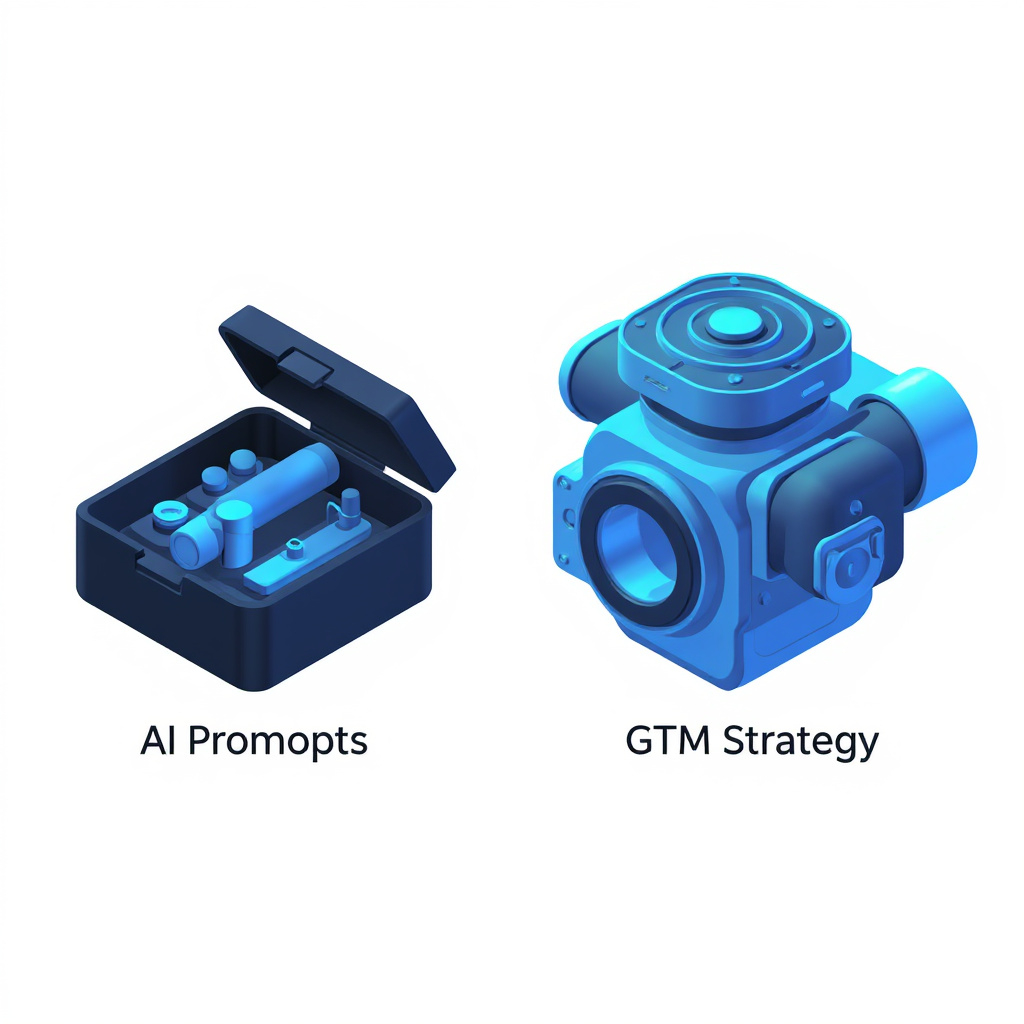25–50 “Proven Prompts” from Growth Coaches Aren’t a Go-To-Market Strategy—Or Much Help at All
Every week, I see “Growth Experts” packaging bundles of 25, 50, or even 100 “proven AI prompts.” They’re marketed as shortcuts to prospecting, objection handling, or go-to-market (GTM) excellence.
The pitch is seductive: just copy, paste, and watch deals close themselves. The reality? Useful prompts are tools, not turnkey strategies. Confusing engineered lists for a GTM playbook is like expecting to win a race by borrowing someone else’s running shoes—they might get you moving, but they won’t help you run your best race.
The Allure—and Limits—of Prompt Lists
AI has transformed sales and marketing. Prompts can:
-
Summarize sales calls,
-
Generate outreach drafts,
-
Spark “what if” thinking,
-
Automate repeatable workflows.
Growth operators are right to explore how well-crafted prompts can speed things up. But borrowed lists? They fall apart quickly.
Using someone else’s canned prompts is like plugging in a borrowed spreadsheet during M&A due diligence or value engineering. It won’t reflect your assumptions, your market context, or your buyer’s culture.
And here’s the kicker: if you accelerate with the wrong fit, you don’t eliminate the problem—you just accelerate the smell.
AI Is Augmentation, Not Substitution
Deploying AI in GTM is like strapping a heater on top of your head: it can amplify, but it cannot replace the brain.
Developers prefer writing their own code over fixing someone else’s, because context and intent matter. In the same way, effective prompting requires your ICP, your math, and your narrative spine.
And in startups, founders who outsource early selling to agencies or CROs rarely build the sales muscle they need. They might get meetings, but they don’t embed a repeatable motion into their DNA.
AI is no different: prompts without context are crutches. Prompts tuned inside your system are accelerators.
The GTM Signal—and What Prompts Miss
Real GTM success doesn’t come from templates. It comes from signal engineering:
-
Capturing granular customer data,
-
Attributing actions and outcomes correctly,
-
Closing the loop for constant learning and improvement.
Prompts can augment each step, but only if they’re wired into your data pipelines, attribution engines, and playbooks. Without that, you’re just pasting words.
Closing Thought
Prompts are best used as frictionless starting points—not as replacements for building GTM muscle.
There’s no shortcut past the uncomfortable, invaluable process of wrestling with your market, learning the narrative, and engineering your own edge.
As in software development or value engineering, acceleration without understanding just scales the smell.
If there’s one AI prompt worth internalizing, it’s this:
“What’s missing here, and how do I make it my own?”


